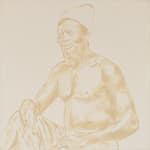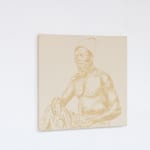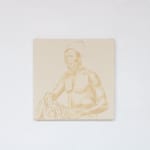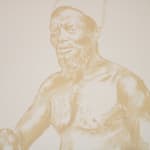



Mulambö Brazil, b. 1995
Further images
Exhibitions
2024 Night of Destiny. Reiners Contemporary Art and Portas Vilaseca Galeria. 1-54 Contemporary African Art Marrakech. Marrakech, Morocco.The Hauçá [Hausa] were enslaved in the Americas as a result of the political upheaval that preceded the jihad in Central Sudan. Muslim identity emerged as a predomi- nant bond uniting the Hausa people and, by extension, neighboring slaves originating from Borno and Nupe. People of other ethnic origins in Central Sudan appear to have been absorbed into the Muslim community, regardless of whether or not they were Islamized before leaving Africa. It is possible that 100.000 to 150.000 slaves from Central Sudan (excluding the northern Yoruba) crossed the Atlantic between the mid-17th century and the first half of the 19th century. This estimate includes captives identified as Hausa, Nupe, Borno, Borgus, and other designations that indicate an origin north of Yorubaland. Between 75.000 and 124.000 of these slaves left between 1800 and 1850, with the vast majority heading to Brazil, especially to the northeast state of Bahia.




